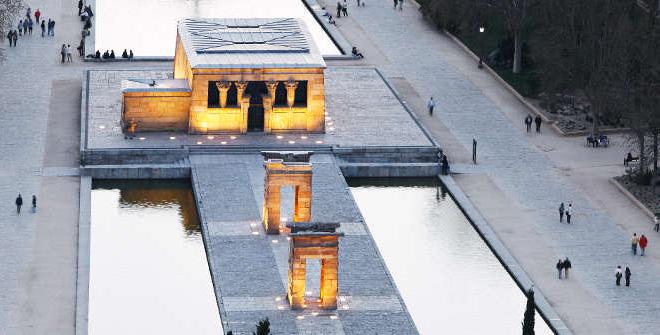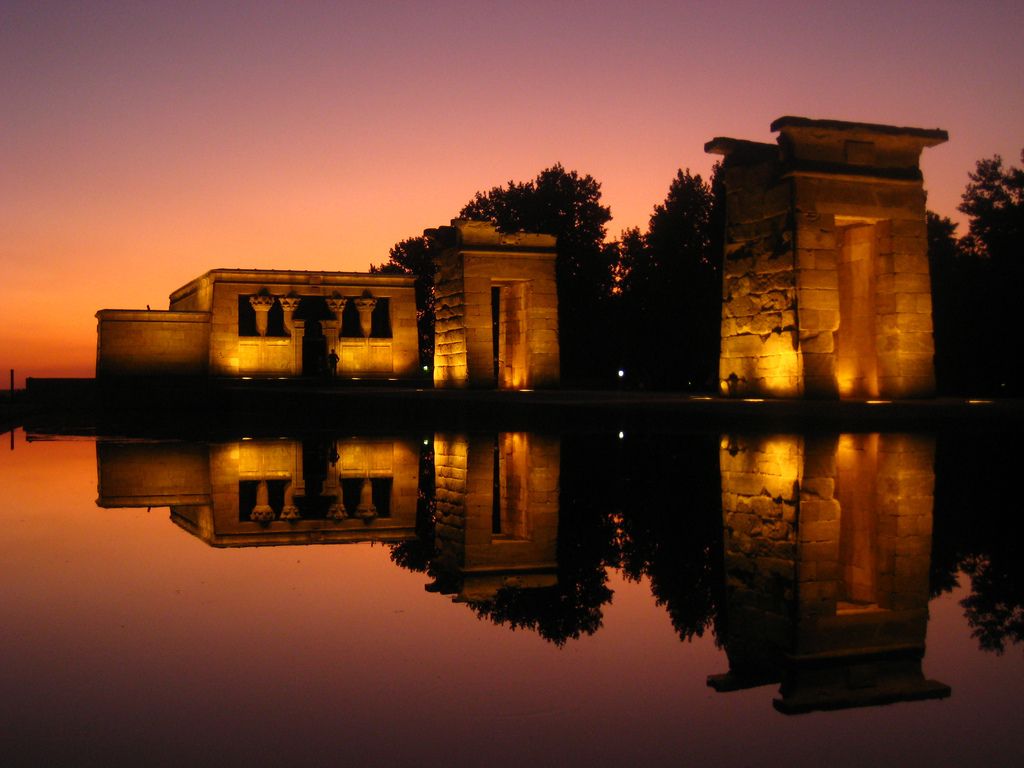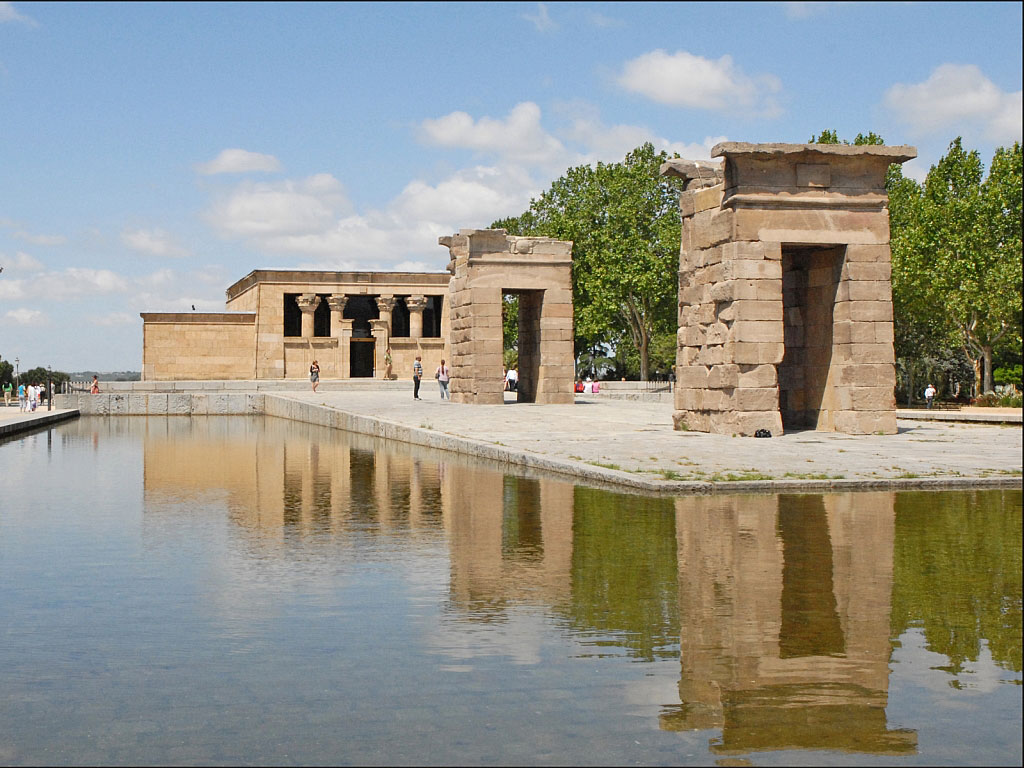The Temple of Debod (Spanish: Templo de Debod) is an ancient Egyptian temple which was dismantled and rebuilt in Madrid, Spain.
The shrine was originally erected 15 kilometres (9.3 mi) south of Aswan[3] in Upper Egypt, very close to the first cataract of the Nile and to the great religious center dedicated to the goddess Isis, in Philae. In the early 2nd century BC, Adikhalamani (Tabriqo), the Kushite king of Meroë, started its construction by building a small single room chapel dedicated to the god Amun. It was built and decorated on a similar design to the later Meroitic chapel on which the Temple of Dakka is based. Later, during the reigns of Ptolemy VI, Ptolemy VIII and Ptolemy XII of the Ptolemaic dynasty, it was extended on all four sides to form a small temple, 12 by 15 metres (39 ft × 49 ft), which was dedicated to Isis of Philae. The Roman emperors Augustus and Tiberius completed its decorations.
From the quay there is a long processional way leading to the stone-built enclosure wall, through three stone pylon gateways and finally to the temple itself. The pronaos, which had four columns with composite capitals collapsed in 1868, and is now lost. Behind it lay the original sanctuary of Amun, the offering table room and a later sanctuary with several side-rooms and stairs to the roof.
In 1960, due to the construction of the Aswan High Dam and the consequent threat posed by its reservoir to numerous monuments and archeological sites, UNESCO made an international call to save this rich historical legacy. As a sign of gratitude for the help provided by Spain in saving the Abu Simbel temples, the Egyptian state donated the temple of Debod to Spain in 1968.
The temple was rebuilt in one of Madrid's parks, the Parque del Oeste, near the Royal Palace of Madrid, and opened to the public in 1972.[7] The reassembled gateways have been placed in a different order than when originally erected. Compared to a photo of the original site, the gateway topped by a serpent flanked sun was not the closest gateway to the temple proper.[8] It constitutes one of the few works of ancient Egyptian architecture which can be seen outside Egypt and the only one of its kind in Spain.












